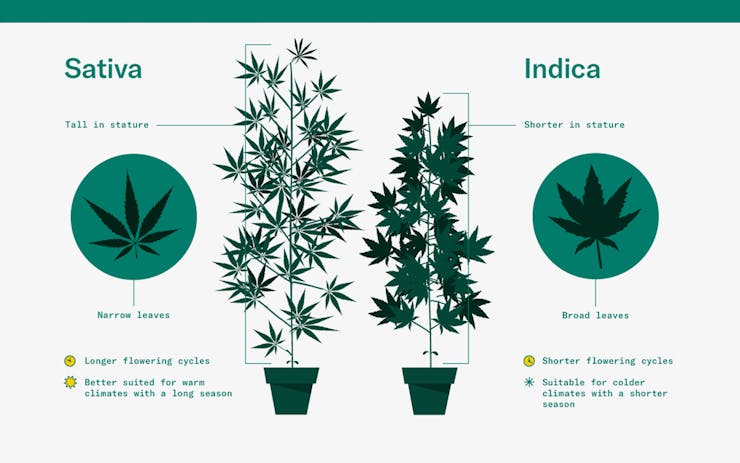Sativa is one of two legacy taxonomic terms for cannabis, along with indica. Physically, sativas are usually tall, airy, narrow-leafed, and slow-growing. Typically, sativas evolved in hot, humid climates, with their lankiness and open bud structure allowing for more airflow to prevent mold.
“Budtender, show me your finest sativas.”
“This sativa takes 10 weeks to flower before I can harvest.”
Where does the word sativa come from?
“Sativa” comes from the Latin “sativum,” meaning “cultivated.” The term “Cannabis sativa” was originally used to describe all cannabis by Carl Linnaeus in 1753. In 1785, evolutionary biologist Jean-Baptiste de Lamarck identified a second type of the plant, which he named “Cannabis indica.”
Sativas are the most widespread of cannabis types, and are typically found in warm, humid, lowland regions.
How is the word ‘sativa’ used today?
It’s virtually impossible to find a pure sativa without going into the wilderness of parts of tropical Africa (Congolese) or southeast Asia (Vietnamese, Cambodian).
Popular sativas in stores today include Sour Diesel and Super Lemon Haze, both intensely hybridized. Sativa effects are advertised as “energetic” or “uplifting,” but as a strain’s overall chemical profile determines effects, consumer experiences vary widely. Researchers have yet to fully understand how the amount and ratio of cannabinoids and terpenes interact to produce a specific effect in a consumer.
Still, consumers consistently report strong preferences for either sativas, indicas, or hybrids—evidence that a broad correlation may exist between plant shape, chemical profile, and effects.
Pros and cons of the term ‘sativa’
The sativa/strains/hybrid system offers consumers a simple way to choose between different types of cannabis. The downside of this naming system is that it might not actually help someone find the strain that’s right for them, as effects are determined by a strain’s chemical profile, not whether it’s an indica or sativa—two sativas might lead to different effects, and the same strain can affect two people differently.
Ultimately, these terms help growers and breeders understand how a plant will grow and how long it will take to grow until harvest.
